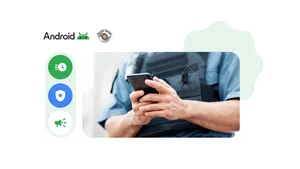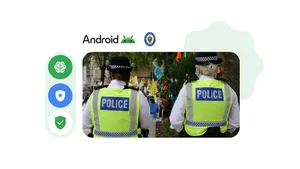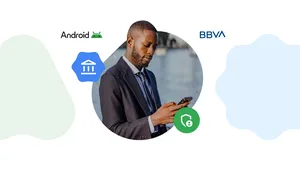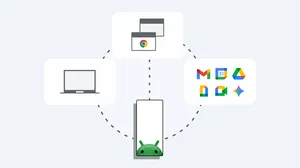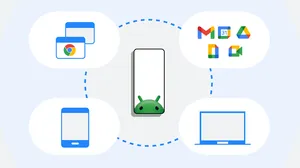How Uber, Pitney Bowes and SAS Institute Inc. are embracing Android
Android empowers business teams to work more productively and build great solutions for their customers. At Google Cloud Next in July, three Android customers—Uber, Pitney Bowes and SAS—shared how they’ve used Android to scale their businesses and improve the customer experience. Here’s a look at how Android is being put to work:
Fuelling global growth with Android device diversity
Uber was born on mobile and embraces a “mobile-only” mindset. The company first turned to Android when it moved into international markets and needed a way to quickly scale and roll out its services to drivers and riders.
At Cloud Next, engineering manager Luis Madrigal recounted how Uber took advantage of Android’s open source system to build custom devices for its drivers. As the company expanded, the next step was to use Android management tools with BYOD devices.
“Restaurants are enjoying the Android experience and our Android application. Our users enjoy the ability to opt into our corporate program or partake in BYOD options,” Madrigal said.
More recently, Uber has deployed Android tablets to help Uber Eats restaurants fulfill orders more efficiently. “Once again, we turned to Google, and now Android tablets have actually overtaken [iPads]. We continue to work with Android partners to leverage [fully managed device capabilities] and auto provisioning to expand our service,” said Madrigal.
Madrigal also said the company’s commitment to Android has been strengthened by initiatives like the Android Enterprise Recommended program, which features a curated list of devices that meet elevated enterprise requirements.
Android management capabilities boost user satisfaction
As a top analytics software developer, SAS is passionate about its devices. The company used Android Enterprise to standardize management and give employees more choice in devices while maintaining high levels of security and support.
SAS Information Systems Engineer Jay Robinson said the goal for the company was to find a mobility solution to increase productivity and communications. “We picked the Android work profile because of the way it separates work and personal information,” Robinson said. “That was a good comfort to our users.”
Android was also a good fit given SAS team’s attitude to mobility. “The decision to support Android was made on day one. Smartphones at SAS grew organically, the way they do at other enterprises. They became popular and people started bringing them to work, to access and manage our systems. Being user driven, the choice was very obvious,” Robinson said.
Like Madrigal from Uber, Robinson also had a favorable view of Android Enterprise Recommended. As someone tasked with testing and approving devices, he said the program performs the vetting necessary to ensure devices meet the elevated requirements of the enterprise: “This is going to streamline a lot of our device selection processes.”
Mobility and security solutions
Zahid Ahmed, Chief Architect of SMB, IoT, and Commerce at Pitney Bowes, was enthusiastic about how Android can be used to power a non-traditional hardware solution.
Pitney Bowes turned to Android to help it transform a postage meter into its new SendPro C-Series mailing, shipping and tracking device. The connected system and user interface was an International Design Award Winner, and helped Pitney Bowes improve its customer experience while streamlining customer support. That experience, according to Ahmed, became a window into how Pitney Bowes could leverage the power of the open Android OS and its vast app ecosystem.
While Pitney Bowes’ use case is unique, Zahid said his experience with Android illustrates how an organization can create a complete mobility solution.
“Look at the connected device use cases for your own enterprise fully and understand where the hotspots are,” he advised. “From device provisioning to application provisioning, Android enables you to have an end-to-end solution in place.”
Finally, security is critical to any mobility effort. Android offers Google Play Protect, a mobile threat detection service that monitors all apps hosted on Play and used on Android devices. Zahid said Google Play Protect is “fantastic from the standpoint of securing the applications” to ensure apps run safely on the device.

